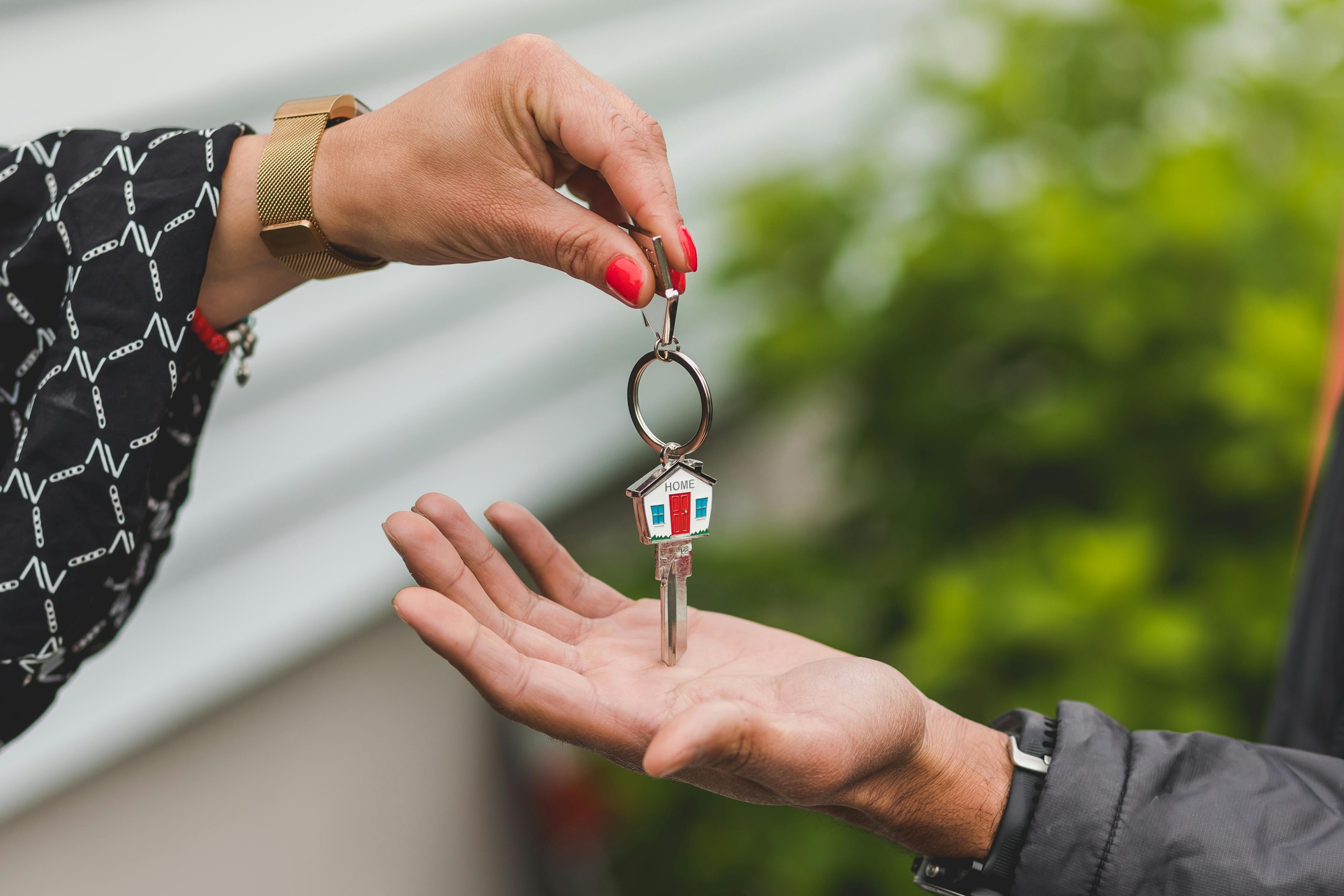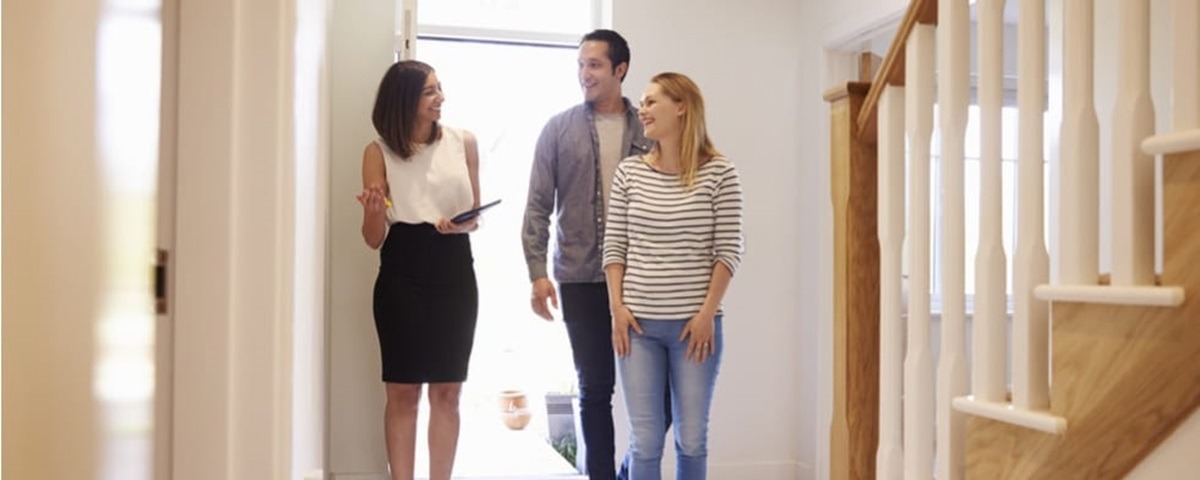
Purchasing a property for the first time is a major milestone - one that can be both exciting and overwhelming. For many, it marks the beginning of long-term financial planning, stability, and personal investment.
However, navigating the housing market as a first-time buyer presents unique challenges, from understanding mortgage options and budgeting for hidden costs to choosing the right location and negotiating the best deal.
Drawing on the latest data from the Office for National Statistics (ONS), government housing reports, and a survey of 2,000 independent UK homeowners, Barratt Homes has released a comprehensive First-Time Buyers Report.
This report explores key market trends, buyer demographics, behaviours, challenges, and the support available to help new homeowners get on the property ladder
First-time buyer demographics
Data from the government’s English Housing Survey, over the last 20 years, shows that the average age of first-time buyers in the UK (outside of London) has increased from 30.6 years to 33.6 years.
.jfif?h=500&w=750&hash=3738E7CC3C9AA53B229948585205A643)
This suggests that those within the 25 – 34 age group are most likely to become first-time buyers, with half of those (49%) buying their first home in this age bracket. This is followed by 31% of first-time buyers aged between 18 and 24.
Data from the government's English Housing Survey also shows an increase in the number of solo buyers, with 40% now buying their first home individually. This comes as the number of solo households in the UK has increased by 16% in the past 20 years.
As for which property types make up first-time buyer purchases, Barratt’s homeowner's survey uncovered that the most common are semi-detached (36%), followed by terraced houses (32%). Apartments were the third most popular property choice at 19%, with detached houses coming in at 13%.
.jfif?h=500&w=750&hash=C05A7FC5CC16E9D9BEEFE8942509275B)
The top first-time buyer locations
Analysing ONS data on first-time buyer mortgage sales, Barratt pulled out the top 10 local authorities with the largest increase in first-time buyer mortgage applications in the last 10 years.
The two largest increases can be seen in Harlow, Essex, with an 87% increase in applications, followed by Knowsley, Merseyside, with an 82% increase.
This is followed by two different locations in Warwickshire, Stratford-on-Avon with a 74% increase, and Nuneaton and Bedworth with a 72% increase.
First-time buyer behaviours
Survey insights from the independent homeowner study uncovered that half of first-time buyers spent three months viewing different properties when searching for the perfect starter home.
A further 29% spent up to six months searching, with the remaining 21% spending over a year searching for their ideal home, with 6% looking for two years.
By analysing seasonal Google Search data for ‘house’ and ‘property for sale’ from the past five years, Barratt confirmed that Springtime (March to May) is the most popular time to house hunt, with over 5.8 million searches.
This is followed by the summer months (June to August), with 5.1 million searches, followed by Winter (December to February) with 4.6 million, and Autumn (September to November) with 4.4 million queries.
As for the reasons behind wanting to buy a home, the homeowner survey revealed that having more personal space was the top reason, at 28%.
This was followed by a quarter (25%) being keen to move in with their partner, and one-in-five (19%) eager to move out of the family home.
Other reasons were to start a family, with 17% stating this as the top motive, 8% wanting to freely decorate, and 4% to live closer to work.
When asked what their priorities were when choosing their ideal starter home, the most common factors were the price and location of the property itself.
Data taken from Barratt’s homeowner survey revealed that the size and layout of the property were the top priority for 39% of homebuyers.
This was followed by commute time (16%) and access to public transport (10%), as well as access to green spaces (7%) and school catchment areas (7%). Six per cent of homebuyers also cited access to their favourite supermarket as a contributing factor to choosing their home.
Challenges facing first-time buyers
When asked how confident first-time buyers were in the home-buying process, half (47%) stated that they didn’t feel confident, with the homeowner study highlighting a clear knowledge gap.
Barratt’s own house buying jargon buster guide is packed full of information on the house buying process from house viewing to making an offer and securing a mortgage.
Similarly, when asked what they found the most challenging, one in five (21%) stated that understanding the different mortgage options was the most challenging part of the process.
Meanwhile, over a quarter (27%) of first-time buyers stated that finding a home within budget was the biggest hurdle, alongside an additional 12% stating competing with other buyers.
As for where first-time buyers are turning for mortgage advice, the most popular source for information are mortgage brokers, with almost half (46%) of buyers having consulted with one.
This is followed by one in five (20%) using online searches as their primary source of mortgage information, closely followed by 18% turning to family members, and a further 11% to friends.
Saving up for a deposit can be challenging for first-time buyers, with one in 10 (9%) revealing that they struggled with this the most. Additional data found that the average first-time buyer in the UK saves for up to three years to be able to afford a deposit payment; however, for many it can take longer depending on the local property prices.
As for which measures homebuyers are adopting to help save for a deposit, setting up a dedicated savings account tops the list, with 38% doing so. This is followed by 32% cutting back on socialising in a bid to cut back on any unnecessary spending.
Other measures taken include working longer shifts/more hours, with 24% doing so, as well as 14% taking on an additional job, and 12% pushing for a pay rise at work.
Family members also play a crucial role in assisting first-time buyers, with 15% leaning on their family to contribute financially to a deposit, and 14% moving back in with family in a bid to save on rent payments.
Analysing data from the government's UK House Price Index revealed the average price of a house deposit for first-time buyers is £54,200, however, regionally, there is a large difference.
Looking at the average regional deposit price across the UK, outside of Greater London, the South East has the highest needed deposit values of £77,000 compared to the North East’s £33,000.
.jfif?h=968&w=1692&hash=7FC15C51AC253FD876B86E271BB98F55)
These regional deposit amounts are reflected in regional house prices.
The most common deposit amount is a 10% down payment, followed by 5% and then 15%. The collected data found that the overwhelming majority (92%) of first-time homebuyers rely on securing a mortgage, with only 8% buying their property outright.
Interestingly, only 12% of homebuyers stated that they used a Help-to-Buy or equivalent scheme to help secure their home.
Interest rates set by the Bank of England also have a knock-on impact on first-time buyers, despite a previous study by Barratt finding a third (37%) don’t know how they are determined or what they mean.
Higher interest rates mean monthly mortgage payments will be higher, potentially straining an individual's budget. However, lower rates mean lower monthly payments, making it easier to afford a mortgage and potentially allowing for increased borrowing.
Data from the Bank of England shows just how much interest rates for different mortgages have fluctuated over the last 25 years in the UK, benefiting some while pressuring others.
Available support for first-time buyers
There are many different schemes available from both mortgage providers and housing developers, however, data from the homeowner study found that one in five first-time buyers lack awareness of these affordable home ownership schemes.
Own New – Rate Reducer
This scheme is available on new-build homes and could mean lower mortgage rates and reduced monthly payments for both first-time buyers and existing homeowners.
Depending on the build stage of your chosen home, we could contribute either 3% or 5% of the purchase price towards your move. This could reduce your mortgage interest rate by up to 3.19%.
First Homes Scheme
This is a government-backed scheme designed to help first-time buyers own their own home in England. Under the scheme, homes are offered for sale with a discount of at least 30%, all the way up to 50% of market value.
Bank of Family
With our Bank of Family scheme, if you’re getting financial support from your family or friends to help you get on the property ladder, we could match it up to a maximum of £15,000 of the purchase price.
Lifetime ISA
You can use a LISA to buy your first home (for a property costing £450,000 or less) or save for later life. You must be aged between 18 and 39 to open a LISA.
You can put in up to £4,000 each year until you’re 50. You must make your first payment into your ISA before you’re 40. The government will add a 25% bonus to your savings, up to a maximum of £1,000 a year
Shared Ownership
When you buy a home through shared ownership, you buy a share between 10% and 75% of the home’s full market value and pay rent to the landlord for the share they own.
You can take out a mortgage to buy your share or pay for it with savings. You’ll also need to pay a deposit, usually between 5% and 10% of the share you’re buying.
Steve Mariner, sales and marketing director at Barratt Redrow, said: “Becoming a first-time buyer is a big moment in everyone’s life.
“There can be a lot to understand, from mortgages and deposits to knowing where to buy and what support there is through the different home ownership schemes available.
“That’s why we’ve put everything into one easy to read report – making life simpler for FTBs on their home ownership journey.”
Ready to take the first step to owning your dream home? Explore Barratt’s range of new homes and available low deposit schemes to turn your home ownership aspirations into a reality.
Methodology
Barratt Homes surveyed 2,000 independent UK homeowners to establish their knowledge and behaviours when buying their first home.
These findings were then combined with industry data gathered from the Office for National Statistics, UK government housing reports, and the Bank of England.
Data Sources:
1. https://www.gov.uk/government/collections/english-housing-survey
2. https://www.ons.gov.uk/peoplepopulationandcommunity/housing/datasets/firsttimebuyermortgagesalesbylocalauthorityuk
3. https://www.gov.uk/government/statistics/uk-house-price-index-for-march-2025/uk-house-price-index-summary-march-2025
4. https://www.bankofengland.co.uk/boeapps/database
.jfif?h=968&w=1692&hash=CBD88AFBB4778CA2EFF3826E96EDCDDE)
.jfif?h=500&w=750&hash=96322A12609A75676845ED2347F7731D)
.jfif?h=968&w=1692&hash=79851103BDBEE956E00BA2C2432619ED)
.jfif?h=968&w=1692&hash=BE69AB673AAF6981EBD6CABEC36FFD3E)
.jfif?h=968&w=1692&hash=2BA92C3054BC397D7786C2D704039E70)
.jfif?h=968&w=1692&hash=A56E5B2939F0C8FED6D6D07D5E8C4471)


